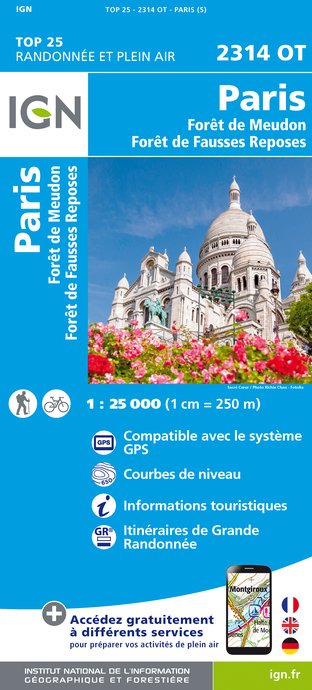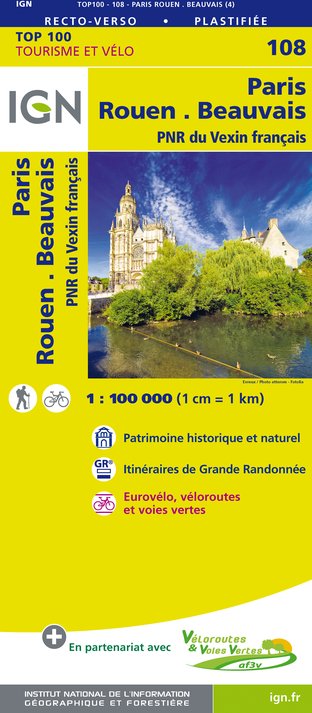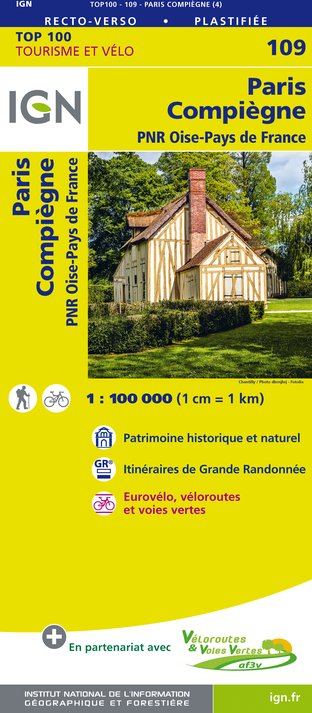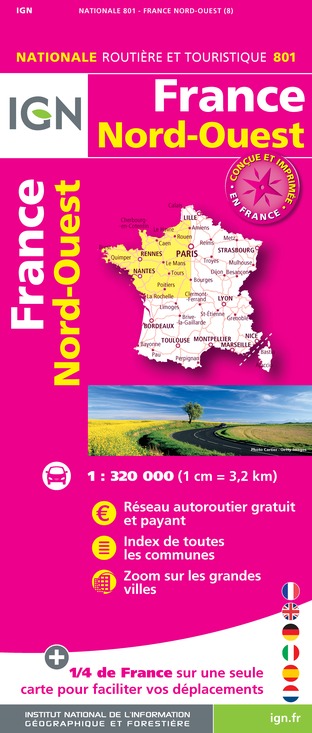Waarschuwing
Waarschuwingen
Type oefening
Boot
Wandel
Fiets
Presentatie
Kaart
Punten van interesse
Cirkwi's opdracht
Beoordelingen en recensies
Zie rondom
Parijs met de Batobus



Credit : Batobus
De Cirkwi brief
Ontdek Parijs via het water: Ontdek de Batobus Route
Samengesteld door Balades Fluviales Fabienne Lemoine Fondateur, biedt de Batobus tour een unieke Parijse ervaring terwijl je langs de Seine glijdt. Laat de typische drukte van stedelijke tours achter je en geniet van een serene reis die iconische bezienswaardigheden verbindt met het gemak van riviervervoer. Deze reis voert je langs het hart van Parijs, van de majestueuze Eiffeltoren tot het culturele baken van Trocadéro. Het is een uitnodiging om de architectonische wonderen van Parijs en het ritme van de rivier te observeren - een verhaal gemaakt voor degenen die de essentie van de stad in rust willen ontdekken.
Technische route-inzichten
Een volledige route beslaat meer dan 9,8 kilometer, met subtiele hoogteverschillen tussen 27 en 30 meter. De reis kent een minimaal positief en negatief hoogteverschil, precies 11 meter, waardoor het opmerkelijk vlak is. Deze gegevens benadrukken een toegankelijk en ontspannen pad dat ideaal is voor bezoekers van alle leeftijden, en een moeiteloze verkenning van de schilderachtige rivieroevers en architectonische juweeltjes van Parijs belooft zonder fysieke inspanning.
Seizoentips voor de Batobus-reis
Ongeacht het seizoen is de Batobus-ervaring betoverend. Echter, lente en herfst bieden mild weer, waardoor je ontspannen over de steigers kunt wandelen. Voor zomerreizigers zijn zonnebescherming en hydratatie essentieel, aangezien de aantrekkingskracht van de rivier het helderst is onder de stralen van de zon. Winterreizigers moeten zich warm kleden, om ervoor te zorgen dat de kou niet afleidt van de schoonheid van de verlichte avonden in Parijs. Wat betreft veiligheid, blijf altijd op de hoogte van je omgeving en volg de instructies van de bemanning op, vooral bij het aan- en van boord gaan.
Parijs, hart van de Franse cultuur en geschiedenis
Parijs is niet alleen de hoofdstad van Frankrijk; het is een historisch tapijt dat eeuwenlang invloed heeft gehad op de wereldcultuur, kunst en politiek. Gelegen in de regio Île-de-France, hebben de oevers van de Seine rivier belangrijke momenten meegemaakt, van de Franse Revolutie tot baanbrekende Wereldtentoonstellingen. Deze stad die vrijheid, creativiteit en veerkracht belichaamt, wordt majestueus tentoongesteld terwijl je op zijn levensader, de Seine, afdaalt en monumenten ziet die verhalen vertellen van triomf, tragedie en transformatie.
Het begrijpen van het klimaat van Parijs voor reizigers
Parijs heeft een gematigd klimaat, gekenmerkt door milde winters en aangenaam warme zomers. De stad ervaart het hele jaar door regelmatige neerslag, met af en toe sneeuwval in de winter. De beste tijd om te genieten van een Batobus-tour, rekening houdend met het klimaat, is van eind lente tot begin herfst (mei tot september), wanneer het weer het meest geschikt is voor sightseeing en het genieten van het open dek, met minimaal regenachtige onderbrekingen en een comfortabele reeks temperaturen die langdurige verkenning van de rivieroevers en nabijgelegen bezienswaardigheden vergemakkelijken.
Samengesteld door Balades Fluviales Fabienne Lemoine Fondateur, biedt de Batobus tour een unieke Parijse ervaring terwijl je langs de Seine glijdt. Laat de typische drukte van stedelijke tours achter je en geniet van een serene reis die iconische bezienswaardigheden verbindt met het gemak van riviervervoer. Deze reis voert je langs het hart van Parijs, van de majestueuze Eiffeltoren tot het culturele baken van Trocadéro. Het is een uitnodiging om de architectonische wonderen van Parijs en het ritme van de rivier te observeren - een verhaal gemaakt voor degenen die de essentie van de stad in rust willen ontdekken.
Technische route-inzichten
Een volledige route beslaat meer dan 9,8 kilometer, met subtiele hoogteverschillen tussen 27 en 30 meter. De reis kent een minimaal positief en negatief hoogteverschil, precies 11 meter, waardoor het opmerkelijk vlak is. Deze gegevens benadrukken een toegankelijk en ontspannen pad dat ideaal is voor bezoekers van alle leeftijden, en een moeiteloze verkenning van de schilderachtige rivieroevers en architectonische juweeltjes van Parijs belooft zonder fysieke inspanning.
Seizoentips voor de Batobus-reis
Ongeacht het seizoen is de Batobus-ervaring betoverend. Echter, lente en herfst bieden mild weer, waardoor je ontspannen over de steigers kunt wandelen. Voor zomerreizigers zijn zonnebescherming en hydratatie essentieel, aangezien de aantrekkingskracht van de rivier het helderst is onder de stralen van de zon. Winterreizigers moeten zich warm kleden, om ervoor te zorgen dat de kou niet afleidt van de schoonheid van de verlichte avonden in Parijs. Wat betreft veiligheid, blijf altijd op de hoogte van je omgeving en volg de instructies van de bemanning op, vooral bij het aan- en van boord gaan.
Parijs, hart van de Franse cultuur en geschiedenis
Parijs is niet alleen de hoofdstad van Frankrijk; het is een historisch tapijt dat eeuwenlang invloed heeft gehad op de wereldcultuur, kunst en politiek. Gelegen in de regio Île-de-France, hebben de oevers van de Seine rivier belangrijke momenten meegemaakt, van de Franse Revolutie tot baanbrekende Wereldtentoonstellingen. Deze stad die vrijheid, creativiteit en veerkracht belichaamt, wordt majestueus tentoongesteld terwijl je op zijn levensader, de Seine, afdaalt en monumenten ziet die verhalen vertellen van triomf, tragedie en transformatie.
Het begrijpen van het klimaat van Parijs voor reizigers
Parijs heeft een gematigd klimaat, gekenmerkt door milde winters en aangenaam warme zomers. De stad ervaart het hele jaar door regelmatige neerslag, met af en toe sneeuwval in de winter. De beste tijd om te genieten van een Batobus-tour, rekening houdend met het klimaat, is van eind lente tot begin herfst (mei tot september), wanneer het weer het meest geschikt is voor sightseeing en het genieten van het open dek, met minimaal regenachtige onderbrekingen en een comfortabele reeks temperaturen die langdurige verkenning van de rivieroevers en nabijgelegen bezienswaardigheden vergemakkelijken.
Automatisch gegenereerd.
IGN kaarten

2314OT - PARIS FORÊT DE MEUDON FORÊT DE FAUSSES REPOSES
Uitgever : IGN
Verzameling : TOP 25 ET SÉRIE BLEUE
Ladder : 1:25 000
13.90€

190 PARIS CHANTILLY FONTAINEBLEAU
Uitgever : IGN
Verzameling : TOP 100
Ladder : 1:100 000
8.40€

118 PARIS CHARTRES PNR DE LA HAUTE VALLÉE DE CHEVREUSE
Uitgever : IGN
Verzameling : TOP 100
Ladder : 1:100 000
8.40€

108 PARIS ROUEN BEAUVAIS PNR DU VEXIN FRANÇAIS
Uitgever : IGN
Verzameling : TOP 100
Ladder : 1:100 000
8.40€

109 PARIS COMPIÈGNE PNR OISE-PAYS DE FRANCE
Uitgever : IGN
Verzameling : TOP 100
Ladder : 1:100 000
8.40€

D75-95 ÎLE-DE-FRANCE OUEST
Uitgever : IGN
Verzameling : CARTES DÉPARTEMENTALES IGN
Ladder : 1:150 000
5.90€

D77 SEINE-ET-MARNE
Uitgever : IGN
Verzameling : CARTES DÉPARTEMENTALES IGN
Ladder : 1:150 000
5.90€

D28 EURE-ET-LOIR
Uitgever : IGN
Verzameling : CARTES DÉPARTEMENTALES IGN
Ladder : 1:150 000
5.90€

NR01 HAUTS-DE-FRANCE
Uitgever : IGN
Verzameling : CARTES RÉGIONALES IGN
Ladder : 1:250 000
6.80€

NR08 CENTRE-VAL DE LOIRE
Uitgever : IGN
Verzameling : CARTES RÉGIONALES IGN
Ladder : 1:250 000
6.80€

NR03 ÍLE DE FRANCE
Uitgever : IGN
Verzameling : CARTES RÉGIONALES IGN
Ladder : 1:250 000
6.80€

801 FRANCE NORD OUEST
Uitgever : IGN
Verzameling : CARTES NATIONALES IGN
Ladder : 1:320 000
6.10€

EUROPE
Uitgever : IGN
Verzameling : DÉCOUVERTE DES PAYS DU MONDE IGN
Ladder : 1:2 500 000
7.00€
Technische informatie
Boot
Moeilijkheid
Niet gespecificeerd
Afstand
9.9 km
Type oefening
Boot
Wandel
Fiets
Meer informatie tonen
Hoogteprofiel
Startpunt
75007
Paris
Lat : 48.861687Lng : 2.295842
Punten van interesse
Gegevensauteur
Beoordelingen en recensies
Om te zien rondom








